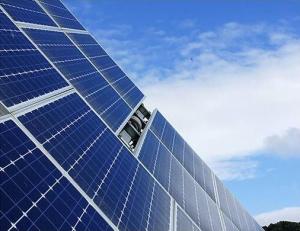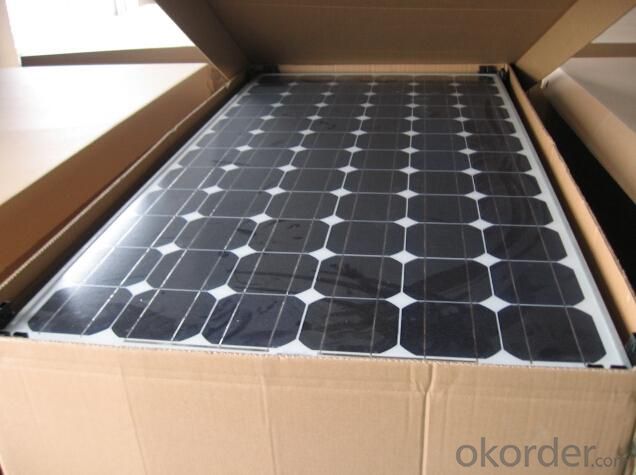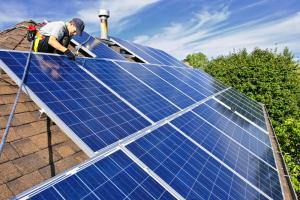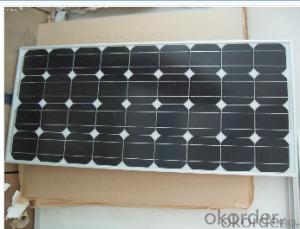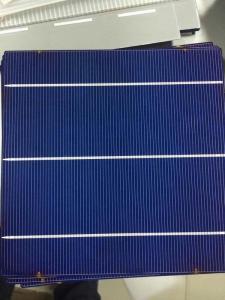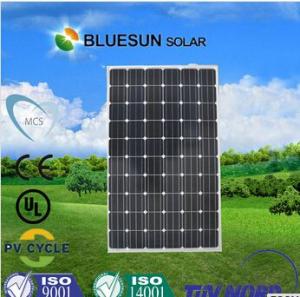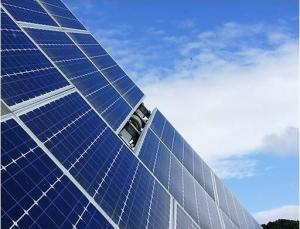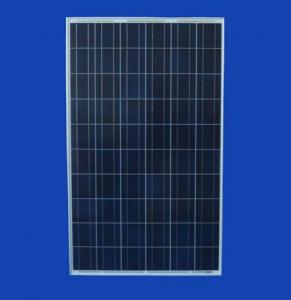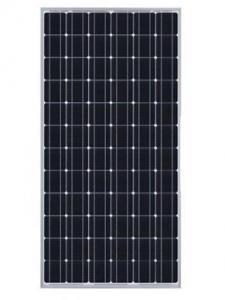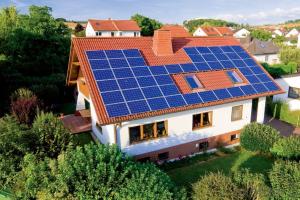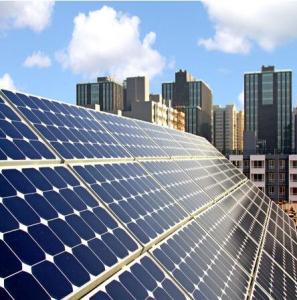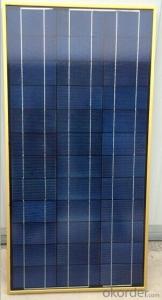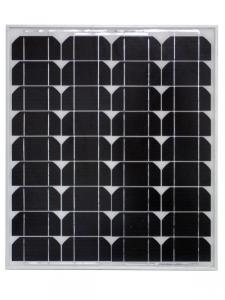Solar Panels El Cajon - Polycrystalline Silicon Solar Modules 60cell-245w
- Loading Port:
- China Main Port
- Payment Terms:
- TT or LC
- Min Order Qty:
- 1000 watt
- Supply Capability:
- 10000000 watt/month
OKorder Service Pledge
OKorder Financial Service
You Might Also Like
1. Structure of Polycrystalline Silicon Solar Modules 60Cell-245W Description
Solar panel refers either to a photovoltaics (PV) module, a solar hot water panel, or to a set of solar photovoltaics modules electrically
connected and mounted on a supporting structure. A PV module is a packaged, connected assembly of solar cells. Solar panels can be
used as a component of a larger photovoltaic system to generate and supply electricity in commercial and residential applications. Each
module is rated by its DC output power under standard test conditions, and typically ranges from 100 to 320 watts. The efficiency of a
module determines the area of a module given the same rated output – an 8% efficient 230 watt module will have twice the area of a 16%
efficient 230 watt module. There are a few solar panels available that are exceeding 19% efficiency. A single solar module can produce only
a limited amount of power; most installations contain multiple modules. A photovoltaic system typically includes a panel or an array of solar
modules, an inverter, and sometimes a battery and/or solar tracker and interconnection wiring.
2. Main Features of the Polycrystalline Silicon Solar Modules 60Cell-245W
• WARRANTIES
- 10-year limited product warranty1.
- Withstand windü loads of up to 2.4kPa and snow loads of up to 5.4kPa, confirming mechanical stability.
Successfully endureü ammonia and salt-mist exposure at the highest severity level, ensuring their performance in adverse conditions.
- High efficiency, multicrystalline silicon solar cells with high transmission and textured glass deliver a module effi ciency of up to 16.0%,
minimizing installation costs and maximizing the kWh output of your system per unit area.
- Tight positive power tolerance of 0W to +5W ensures you receive modules at or above nameplate power and contributes to minimizing
module mismatch losses leading to improved system yield.
- Top ranking in the “TÜV Rheinland Energy Yield Test” and the “PHOTON Test” demonstrates high performance and annual energy production.
3. Polycrystalline Silicon Solar Modules 60Cell-245W Images
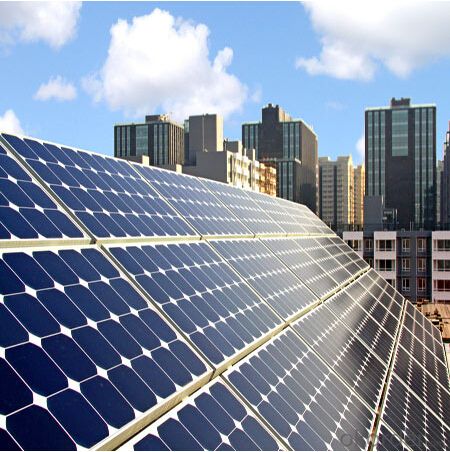
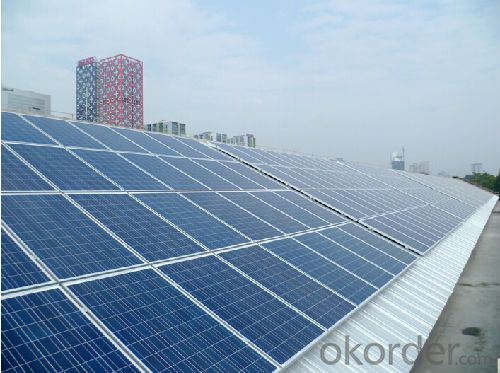
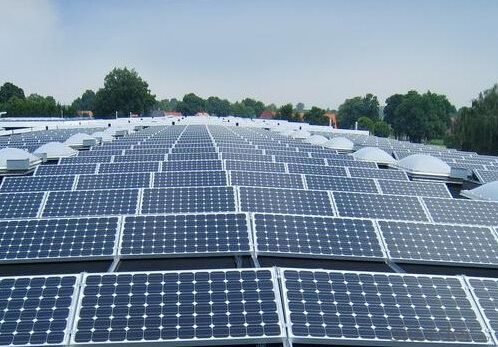
4. Polycrystalline Silicon Solar Modules 60Cell-245W Specification
窗体顶端 Electrical parameters at Standard Test Conditions (STC)窗体底端 | |||
Power output | P max | W | 245 |
Power output tolerances | ΔP max | W | 0 / + 5 |
Module effi ciency | η m | % | 15.1 |
Voltage at Pmax | V mpp | V | 29.6 |
Current at Pmax | I mpp | A | 8.28 |
Open-circuit voltage | V oc | V | 37.5 |
Short-circuit current | I sc | A | 8.83 窗体底端 |
5. FAQ of Polycrystalline Silicon Solar Modules 60Cell-245W
Q1:Can we visit your factory?
A1:Sure,welcome at any time,seeing is believing.
Q2:Which payment terms can you accept?
A2:T/T,L/C,Moneygram,Paypal are available for us.
- Q: How many kilowatts? Would it be enough to power my electric heat?Does one panel cost about $2000.?
- Solar Panels have a large range of prices. You can get a 0W panel for approx. $00 to 200W solar panels at $2000 and beyond. You would want to figure out how much electric heat you use. Then from there, figure out how many solar panels it would take to compensate that. If you need help figuring this out, I would suggest reading a Solar Panel How to Guide and/or looking at a Solar Panel Forum. Best of luck to you!
- Q: i have a small solar panel,the ones from a garden lamp that turns on at night-i think.what i was wondering is can i just connect the solar panel to a capacitor and then a light just to test?or do i need something to convert the solar energy to usable energy?and how do i tell if a capacitor is broken?
- solar panels for those lights provide the power directly to the light, so there is no capacitor used or needed. in any event, capacitors very rarely break but you would need an OHM meter to test it.
- Q: Can solar panels be used in areas with limited sunlight?
- Yes, solar panels can still be used in areas with limited sunlight. While solar panels are most efficient in areas with abundant sunlight, they can still generate electricity even in areas with limited sunlight. However, their output may be lower compared to areas with more sunlight. Additionally, advancements in solar technology, such as the use of more efficient panels and energy storage solutions, have made it more feasible to use solar panels in areas with limited sunlight.
- Q: If I put a 5000 watt solar panel kit on my roof in Dublin (Ireland) - how much electricity would I realistically expect to get?An educated guess at a percentage of 5000w would do.
- Note that aiming is important - the sun is going to be perpendicular to the panels for only a few hours a year unless they are on an adjustable mount, so picking the time you most want power should be a factor in the angle they are mounted at - you can't keep the highest level of sun for summer into the winter time when the sun is much lower in the sky for a shorter time.
- Q: can solar panels have glass between the panels and the sun?
- As above, but also make sure the panels you use will still produce if partially shaded. Some older panels will quit producing if you so much as put your hand over a small portion of it. Newer ones don't do this but are more expensive. As you may need more panel area to produce enough energy to fill a battery (if that is how you go) make sure you have the room/roof area for additional panels.
- Q: So I'm trying to figure out what to ask for my birthday because its one of the few times I can get stuff for no reason, like stuff I don't normally go to the store to buy. (i dont go to the store to get much at all anyway).Anyway, I'm interested in solar panels and led and electronics and i was wondering if there is anything not over expensive that would be cool. Some things I'm interested in:solar, wind, water energyGadgets (multitools, swiss army knives)Vibram fivefingersdrawingmaking stuff (duct tape wallets, stuff out of altoids containers)basically technology and outdoors-gear stuffoh and im 6 turnin 7 male.
- solar panel is expensive, but small solar panel is not expensive, for example, 5w solar panel, solar light also not expensive led light also not expensive. i am not sure about other stuff that you said
- Q: How do solar panels affect roof weight load?
- Solar panels can increase the weight load on a roof, but modern solar panel systems are designed to distribute the weight evenly and not exceed the load capacity of the roof.
- Q: Can solar panels be installed on a stadium or sports arena?
- Yes, solar panels can be installed on a stadium or sports arena. In fact, many stadiums and sports arenas around the world have already embraced solar energy by installing solar panels on their rooftops or parking lots. These panels generate clean and renewable energy, helping the facility reduce its carbon footprint and save on electricity costs. Additionally, solar panels on stadiums can also serve as a visible symbol of sustainability, inspiring others to adopt renewable energy solutions.
- Q: Its cloudy out and i have a solar panel that has 3, .5 volt cells But how do i charge it without sun any other ways?
- There okorder Why pay thousands of dollars for solar energy ($27,000 average cost) when you can build your own solar panel system for just a fraction of the retail cost. You can build a single solar panel or you can build an entire array of panels to power your whole house. Some people are saving 50% on their power bill, some people are reducing their bill to nothing. But what’s most impressive is that just by following these instructions some are even making the power company pay them!
- Q: Are solar panels expensive?
- Solar panels can be expensive upfront, but they are a long-term investment that can save money on electricity bills in the future. The cost of solar panels has decreased significantly in recent years, making them more affordable for many homeowners and businesses. Additionally, there are various financing options available that can help make solar panels more accessible to a wider range of people.
Send your message to us
Solar Panels El Cajon - Polycrystalline Silicon Solar Modules 60cell-245w
- Loading Port:
- China Main Port
- Payment Terms:
- TT or LC
- Min Order Qty:
- 1000 watt
- Supply Capability:
- 10000000 watt/month
OKorder Service Pledge
OKorder Financial Service
Similar products
Hot products
Hot Searches
Related keywords
